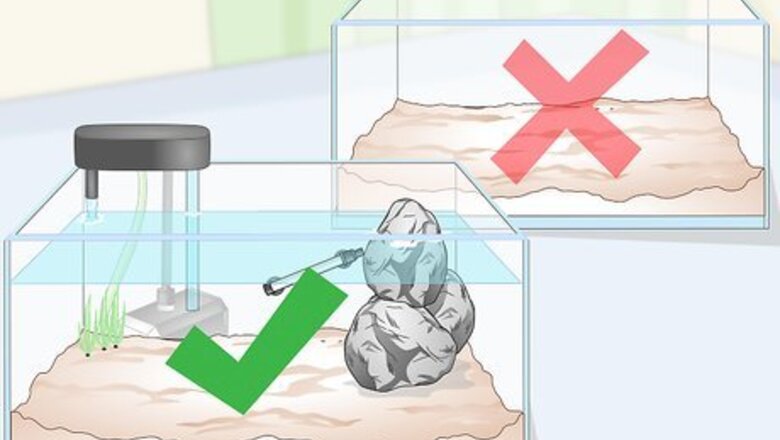
views
Preparing Your Tank
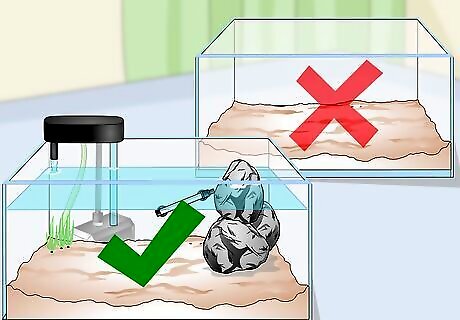
Add starfish to well-established tanks. Do not place a starfish in a new aquarium or one that has not had time to reach a balance with the fish and the chemistry of the water. Starfish are generally too fragile to accept the adjustments that a new tank needs. Even if your tank is well established, do not introduce a starfish to a tank where copper medication has been used recently. Copper is toxic to starfish.
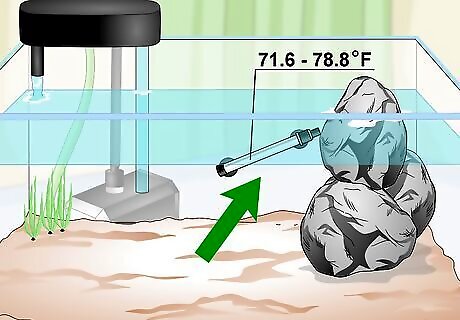
Make sure the temperature is correct. Starfish need to be in water that is between 22ºC and 26ºC (71.6 to 78.8 degrees Fahrenheit). Make sure that the water in your tank is this warm before starting the acclimation process. Most tropical fish tanks should be kept at between 25° to 27°C (76° to 80°F), so you should not have to adjust the temperature much to accommodate the starfish.
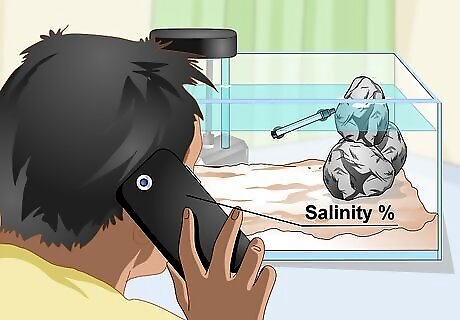
Contact your supplier to determine the salinity of its tanks. Your starfish may have an easier time adapting to its new environment if your tank has salinity close to your supplier's. If buying a starfish from your local aquarium store, this information will be easy to get when you make your purchase. However, if you order a starfish online, you will need to contact the seller and ask them for the information. Keeping the starfish in the same salinity that it is used to will require that your other aquarium residents can thrive in that salinity as well. If they can't, then you will need to adjust the starfish to a new salinity.
Acclimating with the Drip Method
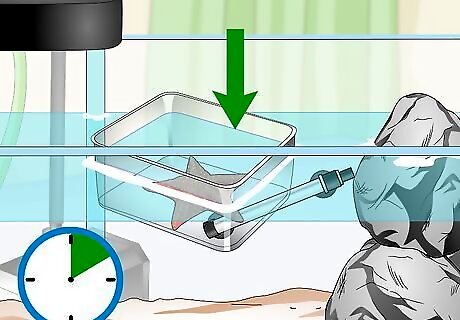
Equalize the temperature in the temporary container and the aquarium. Begin by floating the temporary container in the tank to make sure that both are the same temperature. Hopefully, they are close to the same temperature, so this will only take about 10 to 15 minutes. In most cases, your starfish will come in a plastic bag. If this is sealed tight, it can be floated on the top of the tank water to equalize the temperature. When acclimating new fish into the aquarium, float the bag in the tank for 15 minutes to adjust the temperature. Open the bag and add tank water to the bag every five minutes for an additional 15 minutes. About an eighth cup of aquarium water is enough. Test the pH of the bag water and compare it to the pH of the existing aquarium. The pH of the bag water and the aquarium should be the same.
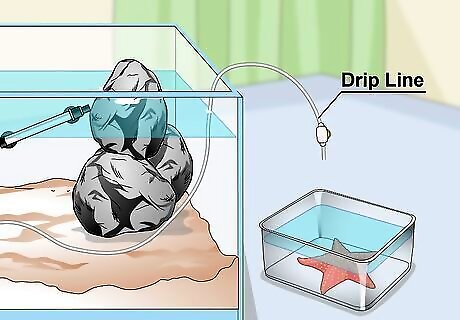
Establish a drip line between your established aquarium and the starfish's temporary container. Place the starfish's temporary container next to the aquarium. In order to slowly acclimate the starfish to its new tank, you will need to place the temporary container next to the tank and run a drip line between them. Drip lines are typically available at aquarium stores and online aquarium suppliers. They typically come with parts at the end that can control the flow of liquid.
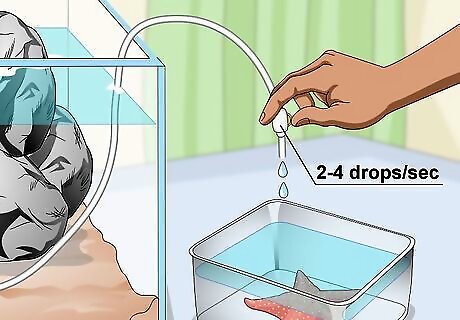
Set the drip rate to 2 to 4 drops per second. In order to make the acclimation of the starfish gradual, you should introduce the new water very slowly. As such, the drip method will take quite a bit of time. Start the siphoning and then assess how fast it is dripping. Plan for at least 2 hours when introducing a starfish to its new environment. Starfish are very fragile during the acclimation phase to a new aquarium, and the whole process must be taken slowly.
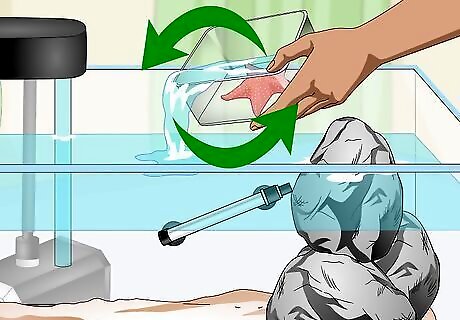
Repeat the process several times. Watch the level of the water in the shipping container and once it is full, dump out half of it. Then begin dripping in tank water once again. You should do this process several times in order to get the starfish acclimated to its new tank. When you dump out half of the water, put it down the drain, not back into the tank. This will assure that the tank levels remain balanced.
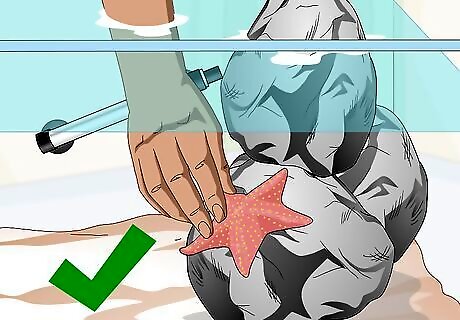
Move the starfish into the tank. Once you have added tank water into the temporary container for several hours, you can move the starfish into its new home. As quickly as you can, lift the starfish out of its temporary tank and place it on a rock in its new tank. The goal should be to limit its exposure to the air as much as possible.
Acclimating with the Cup Method
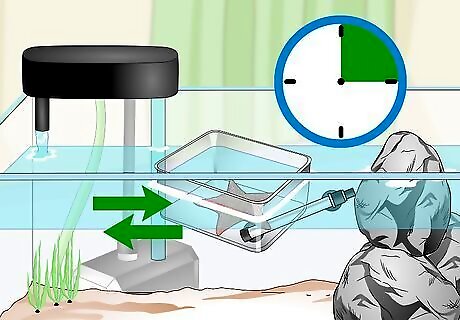
Equalize the temperature of the container and the tank. Float the starfish's temporary container in the aquarium. You should keep the water separate until the temperatures are the same. This should take about 10 to 15 minutes. While the starfish should have been shipped in a container that kept it at a reasonable temperature, it is likely that the temperature is not ideal. However, even if the temperature is not ideal, do not speed up the acclimation process. Your starfish needs time to get used to changes, even if they are for the good of the creature.
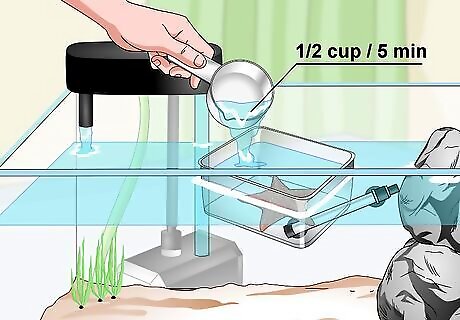
Add tank water to the shipping container. Put 1/2 cup (.25 pt) of water from the tank every 5 minutes until the shipping container has been filled. This will get the starfish used to the new water's pH level. Adding the tank water in gradually will give the starfish the chance to get used to its new environment.
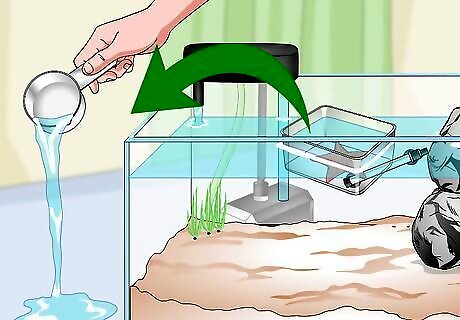
Remove half of the water in the shipping container. Once you have the shipping container full, you will want to dump half of that water down the drain. Do not put it back into the aquarium, so that you don't disrupt the balance of the tank. Removing the water will give you room to add more tank water to the starfish's shipping container. It is allowing you to continue gradually acclimating your starfish to its new water. You can use the same cup you were using to add water to remove the water.
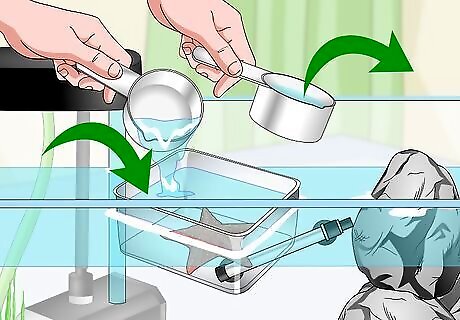
Repeat this process again. Once again, add tank water to the shipping container and then dump some of the water in the shipping container out. Like before, add a 1/2 cup (.25 pt) of water from the tank into the shipping container. Do this every 5 minutes, so that the change continues to be gradual. Then dump half of the water out of the shipping container and begin filling it from the tank once again. Repeat this process several times.
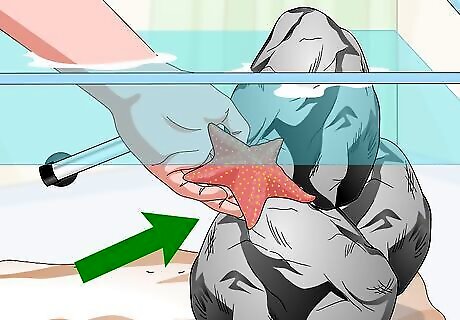
Move the starfish into the aquarium. Once you have acclimated the starfish to its new water, you can move it into its new home. Remove the starfish from the shipping container and place it on a rock in the aquarium. Do not expose the starfish to the air during the acclimation process since starfish are very sensitive to changes in oxygen. Watch to see that the starfish move around on the rock. This could take a few minutes.
Purchasing a Starfish
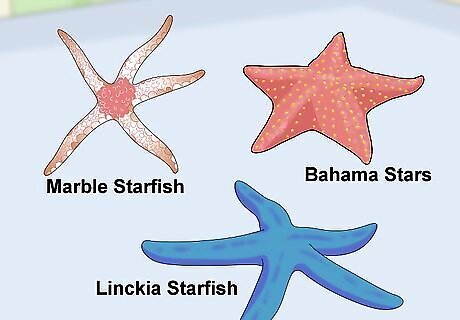
Pick a type of starfish. There are a variety of types of starfish that can be kept in aquariums. Ask what types are available at your local aquarium store and search online retailers for options. Some types of starfish that can be kept in aquariums include: Bahama stars Linckia starfish Sand cleaning sea stars Marble sea stars Harlequin serpent stars Chocolate chip starfish

Order your starfish. Find an aquarium store in your area that sells starfish or can order one for you. You can also order one from an online retailer directly. A reputable online supplier should have healthy creatures and should know how to ship starfish properly. If the creature is less stressed when shipped, it is more likely to survive.
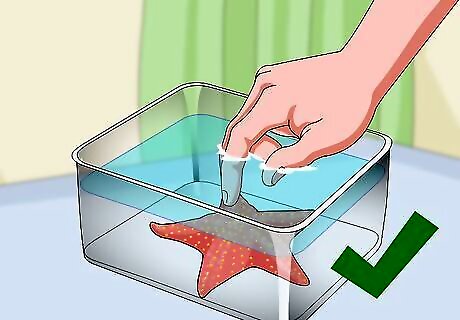
Examine your starfish once it arrives. If you ordered your starfish online, you will need to look it over right away when it is delivered. Check for discoloration, spots, or injury and make sure the starfish's body is firm before starting the acclimation process. Contact your supplier immediately if you notice anything that may be suspicious or wrong.

















Comments
0 comment